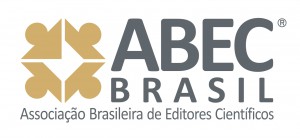Microscopic study of materials used to make masks to protect against COVID-19
DOI:
https://doi.org/10.5216/ree.v23.66859Keywords:
Coronavirus Infections, Pandemic, Personal Protective Equipment, Masks, AerosolsAbstract
Objective: to analyze the materials used to make masks to protect against COVID-19 for use by the general population in relation to the surface, size, shape and distribution of pores by means of a microscopic study. Method: analytical study. Analyzes of fabric samples and other materials used to make masks to protect the community in general against COVID-19 were performed in an Electron Microscopy and Microanalysis Laboratory. Results: the analysis of 100% cotton and twill samples showed these two types of fabrics are an effective microbial barrier. On the other hand, tricoline and the other fabrics and materials analyzed do not offer effective barriers to protect against COVID-19. Conclusion: among the analyzed fabrics, 100% cotton has a denser weft with thicker threads and little porosity, thereby being an effective barrier to protect against infections.
Downloads
References
Organização Pan-Americana da Saúde. Folha informativa COVID-19 [Internet]. Brasília (BR): Escritório Regional para as Américas da Organização Mundial da Saúde; c2020 [atualizado em: 30 ago. 2020; acesso em: 30 ago. 2020]. Disponível em: https://www.paho.org/pt/covid19.
Karmacharya M, Kumar S, Gulenko O, Cho YK. Advances in Facemasks during the COVID-19 Pandemic Era. ACS Applied Bio Materials [Internet]. 2021 [acesso em: 20 out. 2021];4(5):3891-908. Disponível em: https://doi.org/10.1021/acsabm.0c01329.
Center for Disease Control and Prevention. COVID-19. Use of masks to help slow the spread of COVID-19 [Internet]. Atlanta (US): CDC; 2020 [atualizado em: 30 ago. 2020; acesso em: 30 ago. 2020]. Disponível em: https://www.cdc.gov/coronavirus/2019-ncov/prevent-getting-sick/diy-cloth-face-coverings.html
Konda A, Prakash A, Moss GA, Schmoldt M, Grant GD, Guha S. Aerosol Filtration Efficiency of Common Fabrics Used in Respiratory Cloth Masks. ACS Nano [Internet]. 2020 [acesso em: 20 out. 2021];14(5):6339-47. Disponível em: https://doi.org/10.1021/acsnano.0c03252.
Taminato M, Mizusaki-Imoto A, Saconato H, Franco ESB, Puga ME, Duarte ML, et al. Máscaras de tecido na contenção de gotículas respiratórias - revisão sistemática. Acta Paul Enferm [Internet]. 2020 [acesso em: 20 out. 2021];33:eAPE20200103. Disponível em: https://doi.org/10.37689/acta-ape/2020AR0103.
Ministério da Saúde, Agência Nacional de Vigilância Sanitária. Orientações Gerais: Máscaras faciais de uso não profissional. Brasília: Agência Nacional de Vigilância Sanitária, 2020 [acesso em: 20 out. 2021]. Disponível em: https://www.gov.br/anvisa/pt-br/assuntos/noticias-anvisa/2020/covid-19-tudo-sobre-mascaras-faciais-de-protecao/orientacoes-para-mascaras-de-uso-nao-profissional-anvisa-08-04-2020-1.pdf.
Sommerstein R, Fux CA, Vuichard-Gysin D, Abbas M, Marschall J, Balmelli C, et al. Risk of SARS-CoV-2 transmission by aerosols, the rational use of masks, and protection of healthcare workers from COVID-19. Antimicrob Resist Infect Control [Internet]. 2020 [acesso em: 20 out. 2021];9:100. Disponível em: https://doi.org/10.1186/s13756-020-00763-0.
Davies A, Thompson KA, Giri K, Kafatos G, Walker J, Bennett A. Testing the efficacy of homemade masks: would they protect in an influenza pandemic? Disaster Med Public Health Prep [Internet]. 2013 [acesso em: 20 out. 2021];7(4):413-8. Disponível em: https://doi.org/10.1017/dmp.2013.43.
Associação Brasileira de Normas Técnicas. ABNT PR 1002:2020. Máscaras de proteção respiratória de uso não profissional - Guia de requisitos básicos para métodos de ensaio, fabricação e uso. Rio de Janeiro: ABNT, 2020 [acesso em: 20 out. 2021]. Disponível em: https://www.abntcatalogo.com.br/norma.aspx?ID=447152.
Neupane BB, Mainali S, Sharma A, Giri B. Optical microscopic study of surface morphology and filtering efficiency of face masks. PeerJ [Internet]. 2019 [acesso em: 20 out. 2021];7:e7142. Disponível em: https://doi.org/10.7717/peerj.7142.
Ministério da Saúde, Secretaria de Atenção Primária à Saúde, Departamento de Saúde da Família, Coordenação-Geral de Garantia dos Atributos da Atenção Primária. Nota informativa nº 3/2020-CGGAP/DESF/SAPS/MS. Brasília: Ministério da Saúde, 2020.
Downloads
Published
Issue
Section
License
Copyright (c) 2021 Revista Eletrônica de Enfermagem

This work is licensed under a Creative Commons Attribution 4.0 International License.














